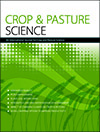CP20245Comparison of disease severity caused by four soil-borne pathogens in winter cereal seedlings
We compared the ability of four crown rot and common root rot pathogens to induce disease in five winter cereals. This research demonstrates significant differences in crown rot and common root rot visual discoloration and host response across the range of cereals. The knowledge gained will be useful for developing improved management strategies for crown and common root rot diseases in crop rotations.
CP20245 Abstract | CP20245 Full Text | CP20245PDF (1 MB) | CP20245Supplementary Material (439 KB) Open Access Article





